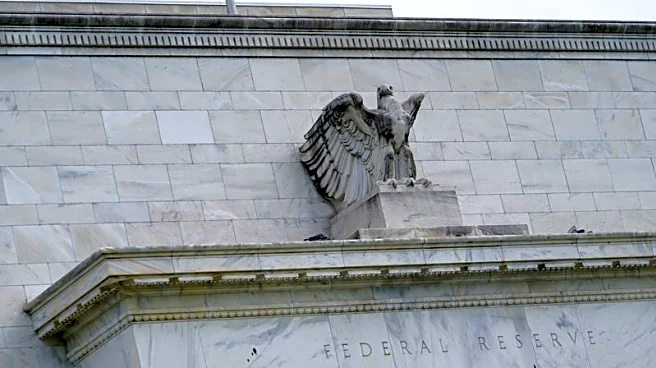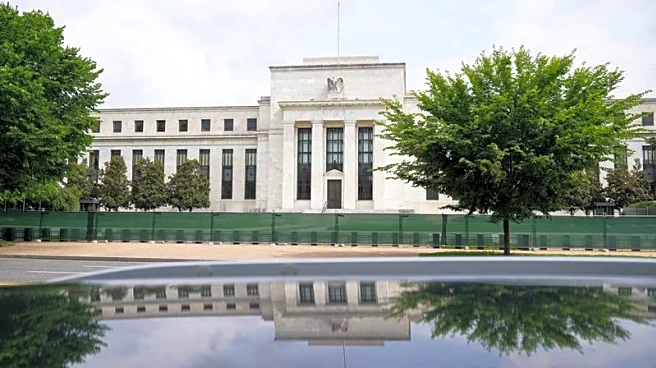What's Happening?
The Federal Reserve is anticipated to lower interest rates by a quarter of a percentage point during its upcoming meeting, despite concerns over the lack of reliable employment data due to the ongoing
federal government shutdown. The shutdown, which began three weeks ago, has disrupted the flow of crucial economic data that the Fed typically uses to inform its policy decisions. Financial markets are largely confident that the Fed will reduce its benchmark rate to the 3.75%-4% range during the Federal Open Market Committee meeting scheduled for October 28-29. Fed Governor Stephen Miran, appointed by President Trump, has advocated for a more substantial half-point cut, aligning with the president's calls for aggressive action. However, Fed Chair Jerome Powell has maintained a more cautious approach, describing the rate reductions as 'risk management' measures.
Why It's Important?
The potential rate cut by the Federal Reserve is significant as it reflects the central bank's response to economic uncertainties exacerbated by the government shutdown. The lack of official jobs data from the U.S. Bureau of Labor Statistics since early September has left the Fed with limited visibility on economic risks, complicating its dual mandate to promote maximum employment and maintain stable inflation. The decision to cut rates could impact various economic stakeholders, including businesses and consumers, by influencing borrowing costs and economic growth. Additionally, the release of the consumer price index for September, expected to show a rise in inflation, adds another layer of complexity to the Fed's decision-making process.
What's Next?
The Federal Reserve's decision on interest rates will be closely watched, with opinions divided on the likelihood of further cuts before the end of the year. A recent poll of economists suggests that fewer than three-quarters expect another rate cut by December. The upcoming release of the consumer price index could further influence the Fed's actions, as rising inflation may prompt a delay in additional rate reductions. The ongoing government shutdown and its impact on economic data availability will continue to be a critical factor in the Fed's policy considerations.












